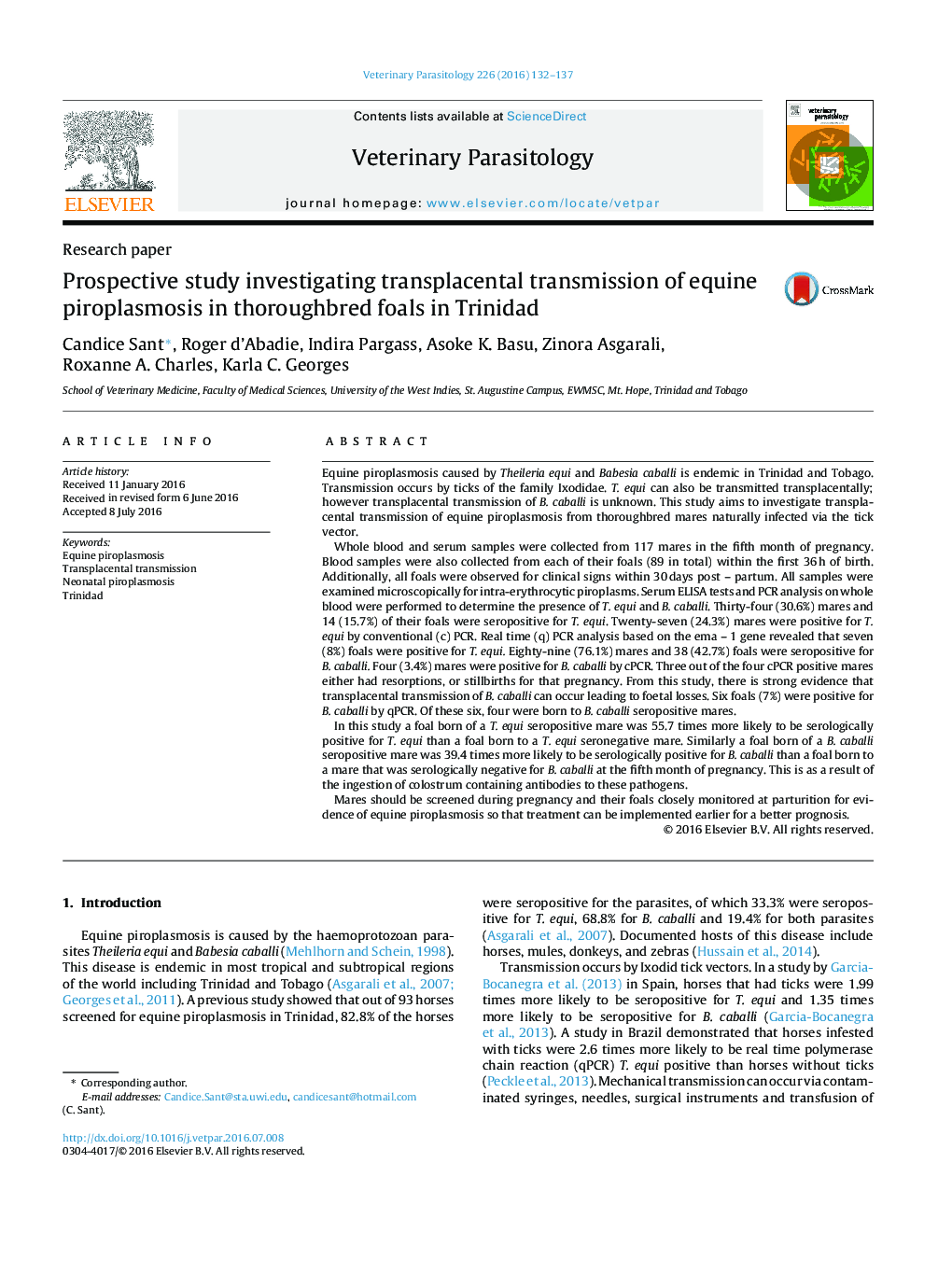| کد مقاله | کد نشریه | سال انتشار | مقاله انگلیسی | نسخه تمام متن |
|---|---|---|---|---|
| 5802017 | 1555650 | 2016 | 6 صفحه PDF | دانلود رایگان |
- Of 118 mares, 27 (24.3%) and 4 (3.4%) were positive by cPCR for T.equi and B. caballi respectively.
- Of 89 foals born, four (4.5%) and seven foals (7.9%) were positive for T. equi by cPCR and qPCR respectively.
- Six of the foals were positive for B. caballi by qPCR only.
- All foals that were cPCR positive for T. equi were seronegative for T. equi.
Equine piroplasmosis caused by Theileria equi and Babesia caballi is endemic in Trinidad and Tobago. Transmission occurs by ticks of the family Ixodidae. T. equi can also be transmitted transplacentally; however transplacental transmission of B. caballi is unknown. This study aims to investigate transplacental transmission of equine piroplasmosis from thoroughbred mares naturally infected via the tick vector.Whole blood and serum samples were collected from 117 mares in the fifth month of pregnancy. Blood samples were also collected from each of their foals (89 in total) within the first 36Â h of birth. Additionally, all foals were observed for clinical signs within 30Â days post - partum. All samples were examined microscopically for intra-erythrocytic piroplasms. Serum ELISA tests and PCR analysis on whole blood were performed to determine the presence of T. equi and B. caballi. Thirty-four (30.6%) mares and 14 (15.7%) of their foals were seropositive for T. equi. Twenty-seven (24.3%) mares were positive for T. equi by conventional (c) PCR. Real time (q) PCR analysis based on the ema - 1 gene revealed that seven (8%) foals were positive for T. equi. Eighty-nine (76.1%) mares and 38 (42.7%) foals were seropositive for B. caballi. Four (3.4%) mares were positive for B. caballi by cPCR. Three out of the four cPCR positive mares either had resorptions, or stillbirths for that pregnancy. From this study, there is strong evidence that transplacental transmission of B. caballi can occur leading to foetal losses. Six foals (7%) were positive for B. caballi by qPCR. Of these six, four were born to B. caballi seropositive mares.In this study a foal born of a T. equi seropositive mare was 55.7 times more likely to be serologically positive for T. equi than a foal born to a T. equi seronegative mare. Similarly a foal born of a B. caballi seropositive mare was 39.4 times more likely to be serologically positive for B. caballi than a foal born to a mare that was serologically negative for B. caballi at the fifth month of pregnancy. This is as a result of the ingestion of colostrum containing antibodies to these pathogens.Mares should be screened during pregnancy and their foals closely monitored at parturition for evidence of equine piroplasmosis so that treatment can be implemented earlier for a better prognosis.
Journal: Veterinary Parasitology - Volume 226, 15 August 2016, Pages 132-137
